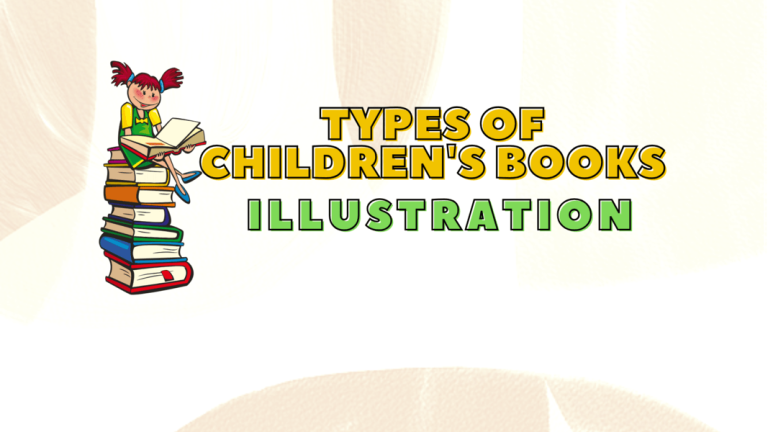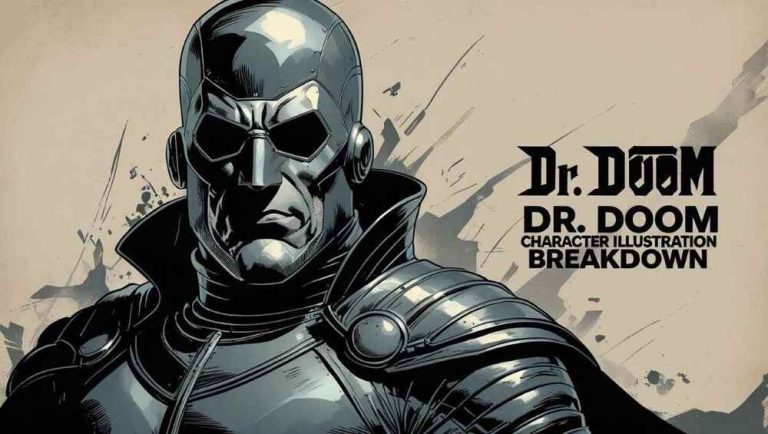How to Find a Book Illustrator

Every story starts with words. But sometimes, words alone aren’t enough. You need something more like a picture, a color, a shape that brings the story to life.
That’s when the search begins. You start looking for someone who can see your story the way you do. Someone who can take the characters in your head and make them real on a page. This is what a good illustrator does for you.
Finding the right illustrator is not as easy as you think. There are different prices, styles, and voices saying Pick me, choose. You will see portfolios and samples, and think, ‘How do I know who is an ideal fit?’
This blog will guide you through the process of finding an illustrator step by step, from your initial sketch idea to your final story. You will read all the details here.
The First Sketch is Knowing What You Want
Before you even start searching for an illustrator, take a pause. Think about your story and not the words, but how it feels. Is it soft and calm? Or loud and full of color? Does it make you smile, or make you think?
That’s your starting point.
Most people do this one thing wrong: they rush to find artists online. However, it is best to understand your own style first. Just ask yourself small things, like what colors fit your story? Do you want drawings that look dreamy or clean and modern?
Some writers keep a small folder on their phone. Whenever they see a picture that gives the same “feeling” as their story, they save it. Over time, that folder becomes a guide. It is not just about copying and pasting, but also about understanding yourself.
When you have a clear idea of what you want, it helps a lot in finding the right illustrator.
Where Do You Even Start Looking?
When you finally decide to find the right illustrator, it may sound confusing. The best way is to start small. Don’t try to look everywhere at once. Choose one or two places that feel easy to use.
Some people like browsing Instagram, where artists share their daily sketches. As you scroll, don’t just see the art but feel it. Does it remind you of your story? Does it make you stop for a second? If that drawing really makes you feel about something, then it’s a good sign.
You can also get in touch with an art illustration agency in Canada or a reliable individual. Agencies often understand what kind of artist fits what kind of story. They make the search a little less stressful.
And when you find someone who feels right, just say hi. Send a small, honest message. Tell them about your story in a few lines. Ask about their work and what they enjoy drawing.
You don’t need fancy words; all you need is just kindness.
Sometimes, that first small message starts the best kind of partnership.
Talking About Money without Losing the Magic
It may feel awkward discussing money with an illustrator. You are careful and try not to say anything that sounds wrong. At the same time, you don’t want to sound firm about prices. At the end of the day, it must be things that work best for both sides.
Tell them what you can spend. Ask what they usually charge. Most illustrators are professional people; they’ll tell you if something can be adjusted or if they can do a smaller part of the project within your range. You don’t need any explanations or debates, but honesty.
And if you feel someone’s rate is higher than your expectations, then don’t panic. It doesn’t mean you can’t work with them at all. Maybe they can take on fewer pages. Maybe you can start with one piece first. Good artists understand. They’ve been there too.
Remember, illustration isn’t quick work. It requires long hours of sketching, redoing, adjusting colors, and aligning the tone of your story. When you pay fairly, you’re not just buying a drawing. You’re showing respect for their time and talent.
Money talk doesn’t have to kill the magic. When both sides listen and stay kind, the collaboration becomes even stronger.
Build a Real Connection before You Start
Finding a book illustrator isn’t only about art. It is also about reliability and understanding. Before you directly jump into contracts or payments, invest some time in connecting first.
- Talk Before You Hire
A short conversation can tell you more than a long portfolio. Here’s what to ask during that first chat:
- What kind of stories do you enjoy drawing?
- How do you usually work with writers?
- What’s your favorite project so far?
- How do you handle feedback or small edits?
You’ll quickly sense if they truly understand what you want.
- Check the Emotional Fit
A good illustrator first listens and then draws. They will want to know:
- Who is your main character?
- What tone does your story carry, like playful, sad, or dreamy?
- How do you imagine readers feel when they see the pictures?
That emotional match matters as much as skill.
- Red vs Green Flags
| Red Flags (Warning Signs) | Green Flags (Good Signs) |
| Rushes straight to payment talk | Listens carefully to your story |
| Hesitates to discuss details | Shares ideas and sketches freely |
| Looks bored or distracted | Seems genuinely excited about your book |
| Says “I’ll just handle it my way.” | Talks about teamwork |
- Why It is Important
When the connection feels genuine, the ideas flow naturally. Feedback becomes easy. And most importantly, you’ll feel like a team, not two strangers working on the same book.
- Check the Portfolio
When you’re learning how to find a Book Illustrator, the first instinct is to look at their art. But this is not all, a good portfolio not only showcases skills, but it also tells a story.
- Notice the Details
When you scroll through their work, ask yourself:
- Do their characters feel alive?
- Can you sense emotions through expressions and colors?
- Does every section tell a small part of a bigger story?
- An illustrator who is clear about the flow will bring your words to life.
- Don’t Miss Variety
A strong portfolio usually includes:
- Children’s book art is full of color and imagination.
- Magazine art and illustration is more refined, concept-driven work.
- Custom portrait illustration services show how well they capture people’s expressions.
Each type reveals a different side of their creativity.
- Portfolio Checklist
| What to Look For | Why It Matters |
| Storytelling ability | Keeps readers emotionally hooked |
| Color balance | Makes your book visually pleasing |
| Style flexibility | Helps match your book’s mood |
| Consistency | Ensures characters look the same throughout |
Why Agencies Help
Agencies are like a bridge between you and your preferred illustrator. They handle the most complicated parts, like shortlisting artists and managing different contracts. You don’t need to stress over new updates and misunderstandings.
- Here’s what they usually offer:
- A team of professional book illustrators to choose from.
- Help match your story’s tone with the right art style.
- Clear pricing before the project begins.
- Ongoing support, even after the illustrations are done.
- Freelance Illustrator vs. Agency
| Option | Pros | Cons |
| Freelance Illustrator | Personal connection, flexible schedule | May need more time to find the right one |
| Art Illustration Agency | Easier process, team support, reliable timelines | It can cost a bit more |
- Tip
If you are not fully sure, then start browsing different agency portfolios. Some even show artists’ comparisons side by side. This helps you see the styles and make informed decisions quickly. You can then discuss your target audience, book, and the agency’s vision. They will usually suggest the artist who fits best into your story.
Comparison of Prices and Packages
When it comes to hiring a book illustrator, the prices may feel like solving a puzzle. Some charge according to the page, some charge per project, while others charge per hour. However, the reality is that it depends on what you need and how detailed you desire your art to be.
Factors that Affect the Price
Here are some main factors that affect the price.
- Style
Realistic drawings take more time than simple cartoon ones.
- Page Count
More pages mean more drawings and more time.
- Color or Black & White
Full color costs more because it takes longer.
- Experience Level
A new artist charges less; a professional costs more but delivers top-quality work.
- Typical Illustration Costs
| Type of Work | Average Cost (USD) |
| Simple sketches | $20 – $50 per page |
| Colored illustrations | $80 – $150 per page |
| Full book project | $800 – $2500 total |
| Magazine Illustration | $150 – $500 per page |
- Tip
Don’t always choose the cheapest option. Sometimes a low price means rushed work. A good illustrator or agency provides value, not just drawings.
They ensure the pictures match the emotion of your story. And that makes your book stand out.
How to Communicate with Your Illustrator
Choosing the right way makes a big difference when working with an illustrator. It works for both of you to stay on the same page and let go of the stress of the future. Here is how you can keep things clearer and simpler.
Step 1. Share What’s in Your Head
Don’t worry about using fancy words. Just say what you feel. Talk about what your story looks like to you. Is it soft and dreamy or bright and loud?
- You can even make a short list like this:
| What You Can Tell | Why It Matters |
| Mood of the book | Helps the artist match the feeling |
| Main colors | Keeps every page connected |
| Character style | Guides how people look and move |
Step 2. Show, Don’t Just Tell
Sometimes words don’t explain enough. So, show pictures that match your idea. Maybe a photo from a magazine or a drawing you saw online. Small things like that make your message clear.
- Try collecting:
- A few sample images
- A simple color board
- A sketch or two from other books you like
These small things help your illustrator “see” what you mean.
Step 3. Keep Talking Along the Way
Don’t just have a one-time conversation and then disappear. Stay connected while your illustrator works. Ask how things are going, and they will appreciate it. When they share a sketch, take a careful look at it. Say things that you love about it. Then gently share what could be better. It helps them know you notice their effort.
You need to say it early if something feels really off. Fixing small things in the beginning is always simpler than changing everything later. Good communication keeps your work light and not stressful. It helps in building trust, and this is what makes great art.
Step 4. Let the Illustrator Add Their Touch
You picked your illustrator for a reason, which is their style. Let them use it. Don’t hold them too tight with rules. Sometimes they will draw you something that you haven’t even expected. Give them a chance. That surprise can turn into your favorite part of the book.
Illustration is not only about copying and pasting your idea directly. It is about bridging your story into existence through someone else’s lens.
It’s a Wrap
Getting the right illustrator for your services requires time, but all the time and effort are worth it. The right illustrator will transform your story into something you can feel, see, and even remember. It is not only about colors and drawings, but it is also about emotions.
Get involved in conversations with people. See their art, ask them questions, and listen to their ideas. You will sense it when someone is the right fit for your work. Whether you hire someone as a freelancer or get in touch with any professional service provider, ensure that you opt for someone who understands your story. This connection is important than speed or price. When both writer and illustrator are on the same page, everything feels alive. Every page glows differently, and effort is visible. This is what readers remember for a long time.



